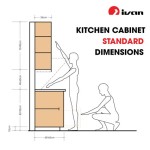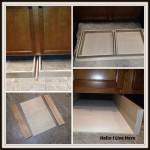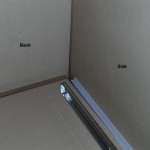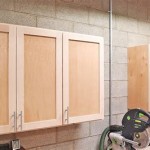Tuscan Kitchen Cabinets: An Exploration of Style, Functionality, and Craftsmanship
Tuscan kitchen cabinets represent a distinct aesthetic within kitchen design, drawing inspiration from the rustic charm and earthy elegance of the Italian countryside. Characterized by warm colors, natural materials, and a sense of timelessness, they evoke a feeling of comfort and sophistication. This article delves into the key attributes of Tuscan kitchen cabinets, examining their design elements, material choices, and the overall impact they have on the kitchen environment.
The allure of Tuscan kitchen cabinets lies in their ability to create a space that feels both inviting and refined. Unlike minimalist or ultra-modern designs, Tuscan kitchens embrace a more substantial, handcrafted aesthetic. This is achieved through a combination of specific design features, material selections, and a general emphasis on creating a space that feels lived-in and authentic. The following sections will explore these aspects in detail.
Key Design Elements of Tuscan Kitchen Cabinets
Several design elements contribute to the unique character of Tuscan kitchen cabinets. These include the use of raised panel doors, decorative moldings, exposed hardware, and glazed finishes. Each of these elements plays a crucial role in achieving the desired aesthetic.
Raised panel doors are a hallmark of Tuscan cabinetry. Unlike flat-front cabinets, raised panel doors feature a central panel that is elevated above the surrounding frame. This adds depth and dimension to the cabinet face, creating a more visually interesting and substantial appearance. The style of the raised panel can vary, from simple and understated to more elaborate and ornate, depending on the overall design vision. A more elaborate panel might include intricate carvings or detailed edging.
Decorative moldings are another essential component of Tuscan kitchen design. These moldings are typically applied to the cabinet frames, crown molding, and baseboards, adding an extra layer of visual interest and sophistication. Common types of moldings used in Tuscan kitchens include rope molding, dentil molding, and beadboard. These details enhance the perceived craftsmanship and contribute to the overall rustic charm of the design. The use of molding also creates shadow lines, further emphasizing the depth and texture of the cabinetry.
Exposed hardware is another important design consideration. Rather than concealing the hardware, Tuscan kitchens often showcase it as a decorative element. Antique brass, wrought iron, and oil-rubbed bronze are popular choices for pulls, knobs, and hinges. These finishes complement the warm color palette and add to the rustic feel of the kitchen. The hardware is typically substantial in size and has a tactile quality, reflecting the handcrafted nature of the design. Often, hardware is selected with visible screws, further enhancing the rustic appeal.
Glazed finishes are frequently used to create a sense of age and depth in Tuscan kitchen cabinets. Glazing involves applying a thin layer of colored pigment over the base finish, which then settles into the crevices and details of the cabinetry. This creates a subtle highlighting effect that accentuates the contours of the raised panels, moldings, and hardware. Common glaze colors include browns, ochres, and umbers, which complement the warm color palette of Tuscan design. The glazing process contributes to the feeling that the cabinets have been aged and carefully maintained over time.
Material Choices for Tuscan Kitchen Cabinets
The selection of materials for Tuscan kitchen cabinets is crucial for achieving the desired aesthetic and ensuring durability. Solid wood, particularly hardwoods like oak, cherry, and maple, are commonly used for the cabinet frames and doors. These materials offer strength, stability, and a natural beauty that aligns with the Tuscan style. Countertops are also a central element in the design, materials ranging from natural stone to ceramic tile provide a vast array of design possibilities.
Solid wood provides a warm and inviting aesthetic with a natural grain. Oak is a particularly popular choice because of its durability and distinctive grain pattern. Cherry offers a richer, warmer tone and a smoother grain, while maple provides a lighter, more neutral option. The choice of wood species can significantly impact the overall look and feel of the kitchen. The use of solid wood also allows for greater flexibility in terms of staining and finishing, enabling the creation of custom colors and effects.
Beyond the wood itself, the finish applied also adds to the Tuscan feel. Stains may range from light honey tones to warm browns to deep reds. The choice of stain allows the designer to create a subtle or dramatic look, while also highlighting the natural beauty of the wood grain. The finish will also impact the durability of the cabinets. A protective finish will protect the wood from moisture, scratches, and other damage.
Countertops are also a major element in the Tuscan kitchen. A number of stones are often selected including granite, marble, or travertine. Granite offers durability and a wide range of colors and patterns. Marble adds a touch of luxury and sophistication but requires more maintenance. Travertine provides a warm, earthy tone and a textured surface that complements the rustic aesthetic. In addition to natural stone, ceramic tile countertops are also a popular choice for Tuscan kitchens. Tile offers a wide range of colors, patterns, and sizes, allowing for the creation of custom designs. Tile is also a durable and easy-to-clean option, making it a practical choice for a busy kitchen.
Creating a Functional and Stylish Tuscan Kitchen
Beyond aesthetics, functional design is a key consideration for Tuscan kitchen cabinets. The layout of the cabinets, the selection of hardware, and the integration of appliances all contribute to the overall usability of the kitchen. Careful planning is essential to create a Tuscan kitchen that is both beautiful and practical.
The layout of the cabinets should be designed to maximize storage space and optimize workflow. This may involve incorporating features such as pull-out shelves, spice racks, and drawer organizers. The placement of appliances should also be carefully considered to create an efficient and ergonomic workspace. The use of islands and peninsulas can provide additional counter space and storage, while also creating a focal point in the kitchen. It is also important to consider the placement of the sink, stovetop, and refrigerator to minimize unnecessary steps and movements.
The selection of hardware should be not only aesthetically pleasing but also functional and durable. The pulls and knobs should be comfortable to grip and operate, and the hinges should be smooth and reliable. The hardware should also be appropriately sized for the cabinets and drawers to ensure proper functionality. The use of soft-close hinges and drawer slides can add an extra level of convenience and luxury to the kitchen. These features prevent slamming and reduce noise, creating a more pleasant and relaxing environment.
The integration of appliances should be seamless and unobtrusive. Built-in appliances, such as refrigerators, dishwashers, and ovens, can create a cleaner and more streamlined look. Panel-ready appliances, which can be covered with cabinet doors, can further enhance the integration of appliances into the kitchen design. The use of a range hood above the stovetop is essential for ventilation and can also serve as a decorative element. The range hood should be appropriately sized for the stovetop and should have sufficient airflow to remove smoke and odors from the kitchen. The integration of lighting is also an important consideration. Under-cabinet lighting can provide task lighting for food preparation, while pendant lights and chandeliers can add ambient lighting and visual interest to the kitchen.
In summary, Tuscan kitchen cabinets offer a unique blend of rustic charm, timeless elegance, and practical functionality. The key design elements, material choices, and layout considerations all contribute to the creation of a kitchen that is both beautiful and livable. The attention to detail, the use of natural materials, and the emphasis on creating a warm and inviting atmosphere all contribute to the enduring appeal of Tuscan kitchen design.
:strip_icc()/102090440-b2b42fc2a3c9400a95b6b9e84f0260f4.jpg?strip=all)
16 Tuscan Kitchens To Take You Abroad From The Comfort Of Home

Tuscan Inspired Kitchen Cabinets By Graber

Custom Kitchen Cabinets Tuscan Style Boise

9 Simplest Ways To Build Rustic Tuscan Kitchen Design

Kitchen 25 Tuscan Antique White Design

Under The Tuscan Kitchen These Features Will Help You Design Your
:strip_icc()/102160210-3a6a4816cd934f52838b734404d13002.jpg?strip=all)
16 Tuscan Kitchens To Take You Abroad From The Comfort Of Home

5 Tips For Designing An Authentic Tuscan Style Kitchen

5 Tips For Designing An Authentic Tuscan Style Kitchen

Cabinet Refinishing A Tuscan Modern Kitchen Update Bella Tucker
Related Posts








